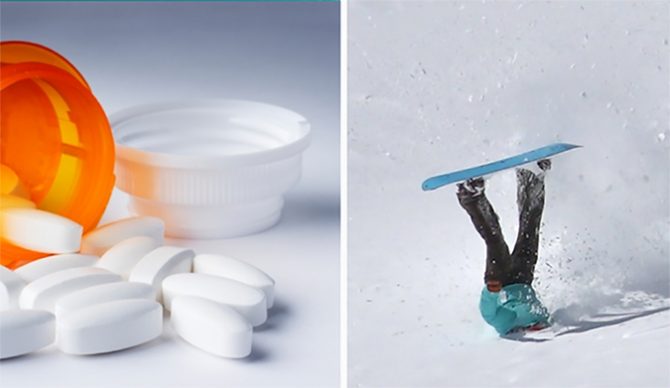
Photo: Childrensaidsociety.org and Youtube.
Recently we ran a feature on the pitfalls of prescription pharmaceuticals. Simply put, the “War on Drugs” (Nixon’s policy in the 70s, not the excellent indie band) focused on the wrong kind of chemicals. Certainly, illegal drugs are a serious societal issue, but the largely hidden addiction of millions to prescription pills is arguably an even bigger problem. Just look at the numbers: the US consumes 75 percent of the world’s prescription drugs despite having just 5 percent of the total global population. Something’s wrong with that ratio.
One of the symptoms of this nationwide disease is that even as the cost of doctor’s visits has risen, a lot of Americans are still over-consuming healthcare services. And with doctors’ offices full not just in the winter when you’d expect it, but in all other seasons, too, overworked physicians spend an average of just 13 to 16 minutes with each patients. Add in the dreaded self-diagnosis that many of us do using WebMD and other medical websites before we get to see our doctor, and you get a, “Hey doc, I think I have INSERT AILMENT and I need you to prescribe me INSERT DRUG NAME.” Not every doctor will simply indulge such a request, but it’s not uncommon for them to give the patient exactly what they want.
This is particularly true when it comes to painkillers. In a culture that encourages managing symptoms instead of treating the source, we have an undeniable issue with pain pill popping. Every day, 78 people lose their lives to opioid overdose, and 7,000 more end up in hospital. To help you avoid taking painkillers you don’t really need, here are four questions you should ask your doctor before getting a prescription: (and check back soon for our interview with Prescription Thugs and Bigger, Stronger, Faster director Chris Bell).
Is there a different, non-pharmaceutical approach we can try first?
If your issue is a musculo-skeletal one, there are likely contributing lifestyle factors that you can affect without popping a single pill. The first is positioning. Are you standing and sitting with proper posture? And if so, are you avoiding optional sitting as much as possible so that you sidestep the orthopedic perfect storm that staying on your tush for 10 hours a day causes? If you got hurt working out or doing your sport, was it an unavoidable incident like a fall (approximately 2 percent of all sports injuries), or repeatedly being in a harmful, non-sustainable position? Have you tried alternative therapies like cupping and dry needling to remedy your issue? Finally, do you have a soft tissue practice that you devote at least 10 minutes a day to in order to release the tension that can predispose you to injury? Ask yourself these questions even before you quiz your physician about an alternative approach to drug therapy.
Are these the least addictive drugs possible?
Not all painkillers are created equal when it comes to the likelihood of addiction. Certain classes of drugs, like opioids, carry a much greater risk of creating dependence, and so should be avoided unless there is no alternative. In fact, more than 2 million Americans are hooked on them, according to The National Institute on Drug Abuse. Make sure you quiz your physician on the addiction risk of the script he or she is about to write for you.
What’s the shortest amount of time I can take these pills before we review my course of treatment?
There are of course medical conditions whose sufferers need to be on some kind of long term pain medication. But this group is in the minority and most of us just need relief from acute symptoms following a defined traumatic event until the body’s natural healing mechanisms kick in. For the good of your overall health, you don’t want to be taking painkillers a day longer than necessary, and should ask your MD how soon you can stop taking them and/or come back to re-assess your condition.
What’s the lowest possible dose I can take that will be effective?
Most prescriptions come with typical “take two pills, three times a day with food” type of advice. But is this really the lowest dose needed to have an impact on your condition? Often it’s just an average, one-size-fits-all guideline based on your gender and whether you’re a child or an adult. A 300-pound person probably shouldn’t be taking the same dose as a 150 pounder. So ask your physician if you can take less than the label says and still get the relief you need.

